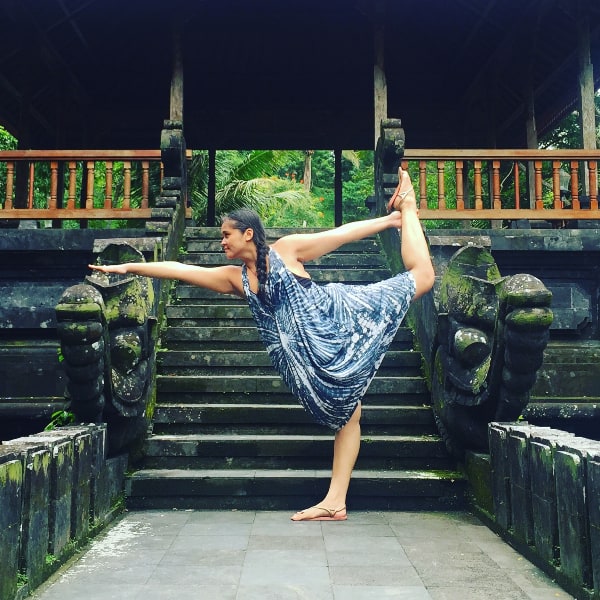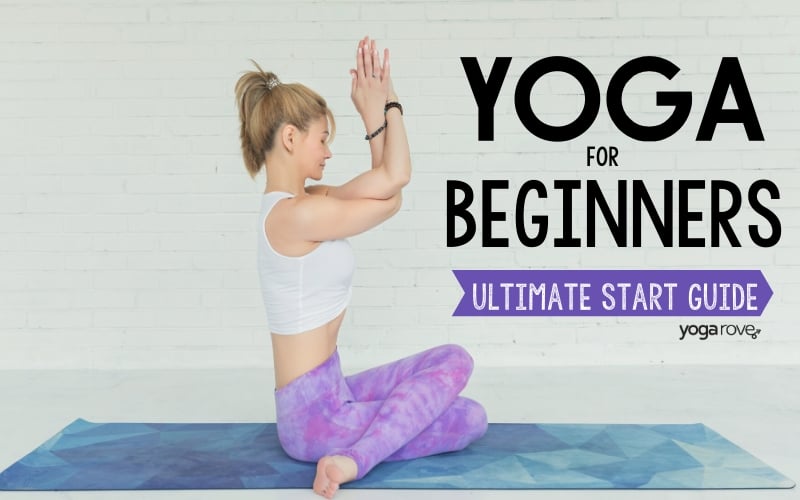This post may contain affiliate links. Please read our disclosure for more info.
Yoga has been hyped as a cure-all in the last decades. Feeling stressed? Practice Yoga. Want to lose weight? Yoga! Have trouble falling asleep? Do some yoga before going to sleep. But is practicing yoga beneficial for every type of ailment?
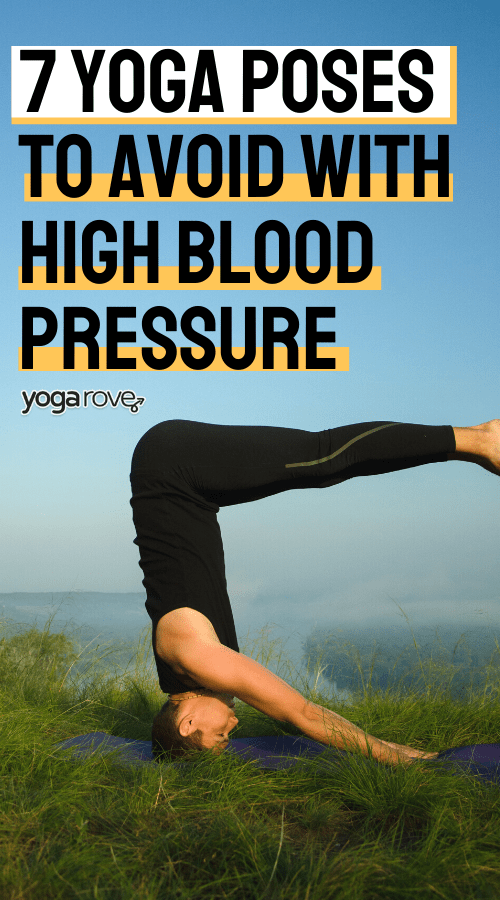
While having a regular yoga practice is healthy and beneficial for most people, it always a good idea to keep any injuries or conditions in mind before you start practicing. From a sprained ankle to more chronic conditions, lots of yogis practice even if they are dealing with conditions or ailments in their bodies. A common condition that many people live with is high blood pressure.
If you are a yogi with high blood pressure, know that you can definitely still practice! However, it is advised to take some precautions while practicing. You might notice that certain postures can make you feel dizzy or lightheaded, or can even make your heart race. While this can happen, it doesn’t mean that you need to stop practicing yoga completely.
Is it Safe to Do Yoga with High Blood Pressure?
High blood pressure affects many people and while it can be a serious condition, it is generally safe to practice yoga with high blood pressure. There are a few poses that you may want to avoid when practicing, and some yogis with high blood pressure find it best to avoid yoga with rigorous sequences and inversions.
Some yoga poses can make it challenging to breathe and can increase your heart rate. Inversions, postures where your head is below your heart, should generally be avoided by yogis with high blood pressure. These types of poses can lead to a greater risk of a stroke and are best to be skipped if you have high blood pressure.
It is super important to stay aware of your breath while you practice. A general rule of thumb is– if you’re having a hard time breathing or if you feel dizzy, take a moment to rest and decide whether or not it is best to avoid the pose. Stay connected to your body and your breath during practice, and check in to see how your body is responding in each yoga posture.
Can Yoga Reduce Blood Pressure?
Just because you have high blood pressure, it doesn’t mean that you have to avoid practicing yoga altogether. In fact, yoga can help you reduce blood pressure if you’re practicing the right poses! So while there are some poses to completely avoid, there are certain poses that can help your condition. Some benefits of a regular yoga practice include:
- Reduces stress and tension in the mind and body
- More body awareness
- More breath awareness
- Better overall health and wellbeing
There have been numerous studies about the positive influence of yoga in yogis with high blood pressure, many of which have concluded that those that practice yoga have reduced blood pressure levels. If you are beginning a yoga practice, it is a good idea to have a chat with your doctor about the type of yoga you are going to be practicing. From there, you can assess the frequency of your practice and what style of yoga is best for your body.
Yoga Poses to Avoid with High Blood Pressure
While you shouldn’t be deterred from stepping on your mat if you have high blood pressure, there are some poses that may be best to avoid, such as inversions. Inversions are yoga poses where your head is below your heart, such as headstand or handstand. Usually, gravity helps us to evenly distribute blood to our extremities, but if you’re in an inversion, your heart must work harder to bring the blood to your legs.
Inversion postures can increase your blood pressure and can be dangerous for people who already have high blood pressure. Practice caution, feel your way through each pose and assess whether or not it should be a pose that you skip during your practice. Some inversions include:
- Headstand
- Handstand
- Shoulder stand
- Plow pose
- Wheel pose
- Fish pose
- Downward facing dog
In addition to specific poses, some styles of yoga such as hot yoga or power yoga can feel very intense and rigorous in your body. These specific yoga practices can raise your heart rate quite significantly and if you have high blood pressure, it is a good idea to practice caution before and during the practice.
What Yoga Styles are Good for High Blood Pressure?
One of the main benefits of yoga is the fact that it can reduce stress in the mind and the body. Stress relief is extremely beneficial if you have high blood pressure, so a relaxing and calming yoga class may be the perfect practice for you. Stress-relieving yoga styles include:
- Restorative yoga
- Yin yoga
- Hatha yoga
- Iyengar yoga
When you are practicing yoga, pay close attention to your breath and your body. If you notice that you are breathing fast and shallow or that you can’t catch your breath, pause and take a moment to ground yourself. Work on keeping your breath and heart rate at a steady and relaxed pace while you practice.
Tips for Practicing Yoga if You Have High Blood Pressure
One of the phrases that you may hear your yoga instructor repeat in every class is to listen to your body. This is especially true if you are dealing with any issues in your body including high blood pressure.
Yoga helps us not only physically, but mentally and emotionally as well. When you practice yoga, you become more in tune with your physical body and your mental reactions, and your body awareness is increased. If you have high blood pressure, use this body awareness while practicing.
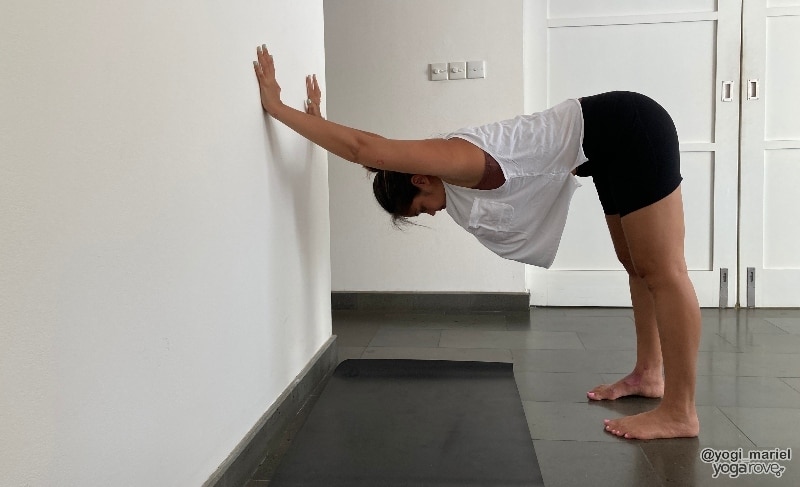
Here are some tips to keep in mind when practicing yoga with high blood pressure:
- Modify your poses: Downward dog is a pose that is practiced in almost every single yoga class. If this posture makes you feel dizzy or lightheaded, know that you can skip it or practice it against a wall. When practiced against a wall, your head and heart are kept in the same line. Instead of placing your hands at the top of your mat, place them on a wall and keep your body in an upside-down L shape.
- Take caution in forward folds: Standing forward folds can cause dizziness if you have high blood pressure. Similarly, seated forward folds can do the same so be sure to keep your gaze and your head lifted when practicing seated forward folds.
- Skip inversions: Inversions can be quite intense postures, even for a seasoned yogi. As your head is below your heart, your body has to work harder and can increase your blood pressure. Feel free to skip these postures altogether and ask your yoga teacher for a better alternative to the full inversion.
- Find the right practice: If you have high blood pressure, remember that certain types of yoga can be better than others for your body. Stick to the more relaxing and calm practices like restorative, yin, and Hatha yoga classes. Take extra caution if you try a vinyasa or Hot yoga class.
- Stay connected to your breath: If it becomes challenging to breathe, take a moment, pause, and connect back to your breath. While practicing, try to keep your breath slow and steady. If you notice that your heart and your breath is racing in a specific pose, it may be a good moment to pause and skip the posture altogether.
What Yoga Poses are Good for High Blood Pressure?
Just because you have high blood pressure, it doesn’t mean that you can’t practice yoga. Any pose that puts the spine in a horizontal position and doesn’t invert the body is generally a safe pose to practice. These poses usually make it easier to distribute your blood through your entire body and won’t get your heart racing. Here are some yoga poses that are good for high blood pressure:
Seated Forward Fold
If a standing forward fold makes you feel dizzy, try this supported seated forward fold. This variation is more accessible for practitioners with hypertension.
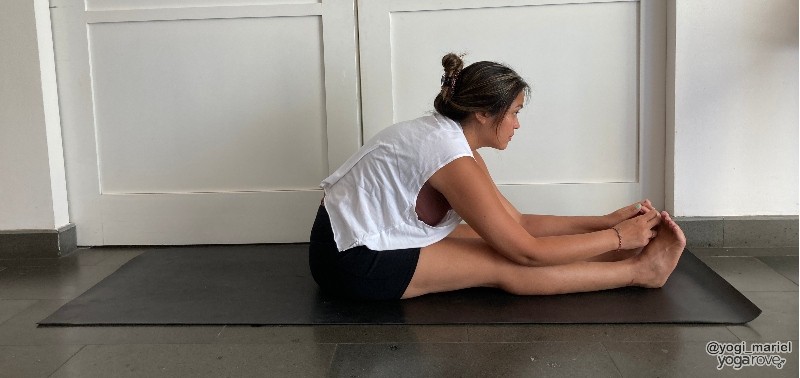
To practice Seated Forward Fold:
- Start in Seated Staff Pose with your legs out in front of you, your feet flexed, and your spine straight.
- Gently begin to walk your hands forward toward your toes and rest your hands on your thighs, shins, or ankles.
- Flex your toes back and keep your legs strong and active.
- Take your belly toward your thighs and your chest toward your knees.
- Keep your spine straight and your side body long.
- Relax your shoulders and keep your gaze toward your toes instead of relaxing your forehead down toward your legs.
- Focus on lengthening the spine and stay for 5 breaths.
Bound Angle Pose
This pose can help you release stress and tension in the hip. Keep your head lifted and your spine straight instead of folding forward.
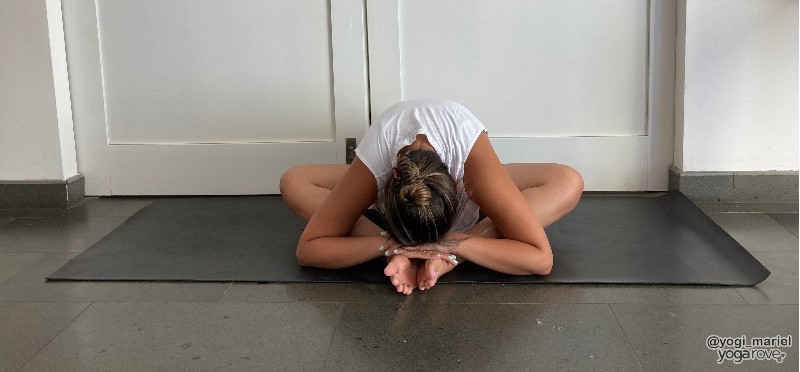
To practice Bound Angle:
- Start by sitting on your mat.
- Bend your knees and take the sloes of your feet together to touch. Your legs should form a diamond shape.
- Readjust your feet either closer or further away from your body. Go with whatever feels the most comfortable.
- Allow your knees to open to the sides of the room and use blocks for support if your hips are tight.
- Place your hands on the side of your feet and keep your spine long and shoulders relaxed.
- Feel free to close your eyes and stay for 5-10 breaths.
Supported Bridge Pose
This is a modified version of wheel pose that helps reverse the blood flow and improve blood circulation. With the help of a prop, you can focus on relaxation while receiving a supported backbend.
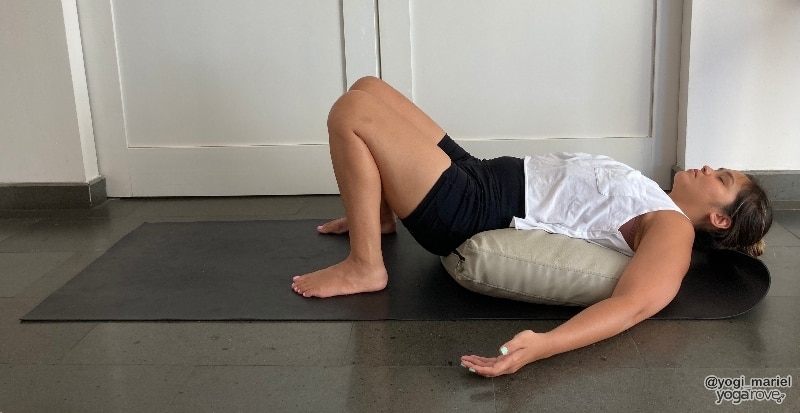
To practice Supported Bridge:
- Place a block next to your mat.
- Lie down on your back with your head to the top of your mat.
- Bend both of your knees and take the soles of your feet flat on the floor with your toes pointing to the back of the room.
- Check that your feet are hips-width distance apart.
- On your inhale, lift your hips up and slide your block or a cushion or bolster underneath your body right at your sacrum.
- Your block can be at the lowest or medium height. Make sure that it is in a comfortable and supportive position.
- Relax your arms alongside your body, and allow the block to support you.
- Close your eyes, keep your feet flat on the floor, and relax your entire body.
- Stay for 10-20 breaths.
Corpse Pose
The most important pose in your whole yoga practice. Corpse pose relieves stress and fatigue, helps your body relax, and allows you to absorb the benefits of your practice.
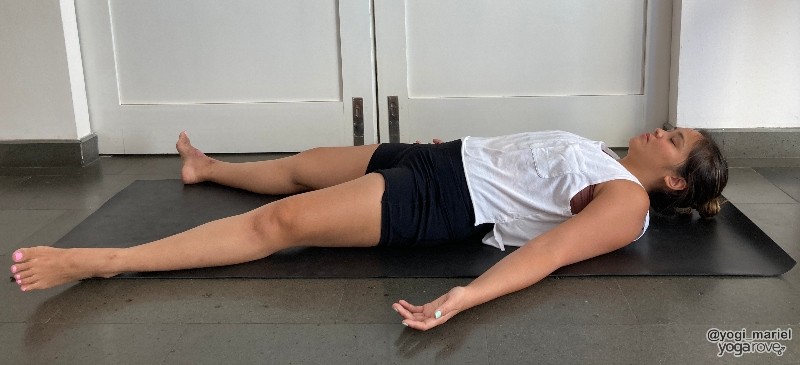
To practice Corpse pose:
- Lie down lengthwise on your mat with your head facing the front of the room.
- Allow your feet to fall open so that you aren’t holding any tension in your legs.
- Take your palms to face up toward the ceiling.
- Scan your body to feel where you may be holding any unnecessary tension and allow every muscle to relax.
- Close your eyes and let go of your breath.
- Stay for at least 5 minutes and enjoy the peace and calm at the end of your yoga practice.
Related Questions
Does Pranayama reduce blood pressure? Yes, breathing exercises help you feel more relaxed and can help you lower your blood pressure. They also allow you to have better control of your breath when practicing yoga and can help you advance your yoga practice.
How do I lower blood pressure naturally? Maintain a healthy weight, exercise regularly, reduce your caffeine and sodium intake, drink less alcohol, eliminate smoking, eat a balanced diet, and learn how to manage your stress levels.
How do I know I have high blood pressure? Many people with high blood pressure have no symptoms. It is very important to see your doctor regularly to have your blood pressure checked. Blood pressure is usually checked at least every two years starting at age 18. Once you reach 40 years consider getting a blood pressure reading every year.


